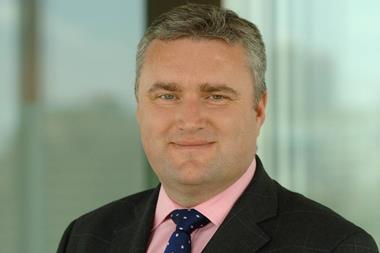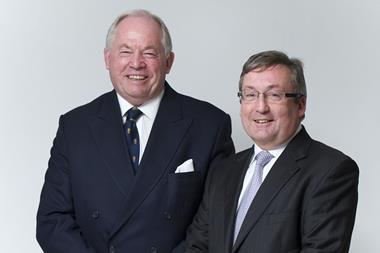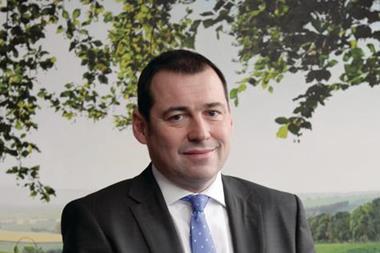In light of Mark Hodges’ departure from Aviva to head up Towergate, analyst John Borgars gives his opinion on the consolidator, while also examining the potential for a merger between Oval and Giles
Towergate’s latest balance sheet showed net tangible assets of minus £609mn and a loss after tax of £14.2m, but the notes to the accounts reveal the reasons why Towergate was willing to spend so much on the goodwill of the businesses it purchased.
Operating margins, excluding amortisation, for its three principal divisions were 29.6% for retail broking, 50.8% for underwriting agencies and 68.4% for mortgage broking solutions. When a cynic compares operating profit to operating cost, one finds retail broking has a comfortable margin of 42% on cost, underwriting agencies has a margin of 103% on cost, and mortgage broking solutions an embarrassing 216% on cost.
Eyes on the prize
In consequence, the Towergate group made profits of £52m, even after paying interest of £59m, before amortisation of goodwill.
Of course, when the accounts are restated onto IFRS for the IPO document, the goodwill amortisation will disappear, which will boost reported profits unless the auditors determine some of it should be categorised as ‘client relationships’ and amortised over a shorter timeframe than the generous 20 years that Towergate is using.
As Towergate is backed by a billionaire and has had £500m of loans from its banks, I suspect that the consolidator did not need Advent so much for the £200m capital it injected as for its skills in obtaining high IPO prices for its investee companies.
Entering the marzipan layer
Meanwhile, both Giles and Oval are expected to float in due course, and it has been suggested to me that they could accelerate this process by merging. I agree that they could but, on balance, I think that they are more likely than not to continue separately.
A merger would have significant benefits, but:
- it is neither necessary nor sufficient;
- the benefits would be partially offset by problems with staff retention and morale; and
- it would be less earnings-accretive than current strategies of buying smaller brokers
Both Giles and Oval have, like Towergate, set out to enter the increasingly depopulated ‘marzipan layer’ of brokers beneath the likes of Marsh and Aon, through a combination of acquisition and organic growth with the help of massive capital support from a friendly investor (Charterhouse in the case of Giles, Caledonia Investments for Oval). Both have have made impressive progress, expanding both their geographic footprint and the range of services on offer to clients.
There are a number of arguments in favour of a merger between Giles and Oval, as one can see possible synergies from combining their branch networks and offering a wider range of specialisations over a wider area, achieving greater revenue with far less than proportionate increase in costs.
The history and the future
Towergate started in 1997, Oval started its progress in 2003, while Giles started in 1967, although its drive to become a consolidator and industry leader largely follows the Charterhouse-backed management buyout in 2008.
So Towergate is half-a-dozen years ahead of Oval and a decade ahead of Giles, and I should expect both Oval and particularly Giles to fill in a few of the gaps before launching an IPO.
I commented last month that Giles had noticeable gaps in its branch network. A merger with Oval would fill some of the gaps, as the overlap between the two networks is less than one-third of Oval’s smaller network, but there would still remain substantial gaps.
The case for merger
Oval has commented that it is sub-scale in private clients, which a merger with Giles would cure. Overall, a combined group would have around 50% more coverage both in number of branches and in range of specialisations than either firm has alone.
However, the increased geographical spread does not convert into a 50% increase in potential clients – the areas of overlap (inevitably London, Birmingham, Glasgow, Edinburgh, Belfast, Leeds, and Aberdeen, also Bristol, Coventry and Ipswich) include more of the UK population than all the rest of the branches combined, so the increased reach in population terms is a modest percentage.
The increased range of services seems more significant: the specialisations of the two groups have as much diversity as overlap, so there would be significant opportunities to market services provided by Giles through Oval branches and vice versa. Giles lists 16 specialisations and Oval has 13, of which five overlap with 10 more tightly defined ones of Giles’s. So a combined group would provide a much wider product range than either firm on its own, which might be expected to attract some new business. Also, the enlarged network would provide ample scope for expansion in Oval’s financial services division.
The case against
The argument with which I am most uncomfortable is that a merger would lift the combined group into the ‘marzipan layer’ at a stroke. It just wouldn’t.
Although each firm has more revenue than the smallest of the quoted brokers that I look at, their joint revenues are less than half (and staff numbers not much more than half) of those of Towergate. Furthermore, the joint range of services would be less than comprehensive, as would the geographical coverage of the branch network. For instance, Giles has no branches in the east Midlands; Oval has two. Oval has one branch in Wales, near Wrexham; Giles has four but all within a few miles of Cardiff, which leaves a lot of empty space in Wales. Eleven out of the 24 specialisations cover just the consumer services sector plus contracting and construction.
For either firm, a merger would be a large step forward but still a long way from the end of the road, and less earnings-accretive than continuing their current strategy of small acquisitions. It is cheaper to buy small operations on whom computers and compliance impose disproportionate burdens.
Against the useful synergy benefits, one must weigh up the significant problems, both in personnel and financial terms, as neither group could make a cash offer for the other without a massive capital injection (both have negative net tangible assets at group level). Plus, their different capital and incentivisation structures would complicate a merger. Either Charterhouse for Giles, or Caledonia Investments for Oval, could, at a pinch, fund a takeover, but neither needs to be in a hurry.
People problems
Mergers of ‘people’ businesses are very tricky, even more so than takeovers. The most significant questions would be staff retention and morale, capital adequacy and Oval’s shareholding structure (the value of founders’ shares depend upon the IRR (internal rate of return), and militates against an expensive acquisition or selling out cheaply).
Also, valuation would be difficult, as both groups suffered from the downturn in premium rates during 2009/10, which led to operating profits that were not enough to cover both interest and amortisation of client relationships at group company level. That said, both expect some recovery this year, helped by the rise in premium rates for UK motor policies and lesser rises elsewhere.
In addition, the very significant overlap in terms of specialisation would create fears of redundancies, and branch overlap would inevitably cause redundancy, both of which would impact on morale.
Finally, Oval chief Phillip Hodson has just taken over as chairman of Marylebone Cricket Club, so now isn’t a great time for him to supervise the massive problem of a merger of near-equals, both of which are still digesting previous acquisitions. This is surely one ambitious idea that will have to take a back seat for now.
John Borgars is an award-winning analyst with independent research firm Equity Development






































No comments yet